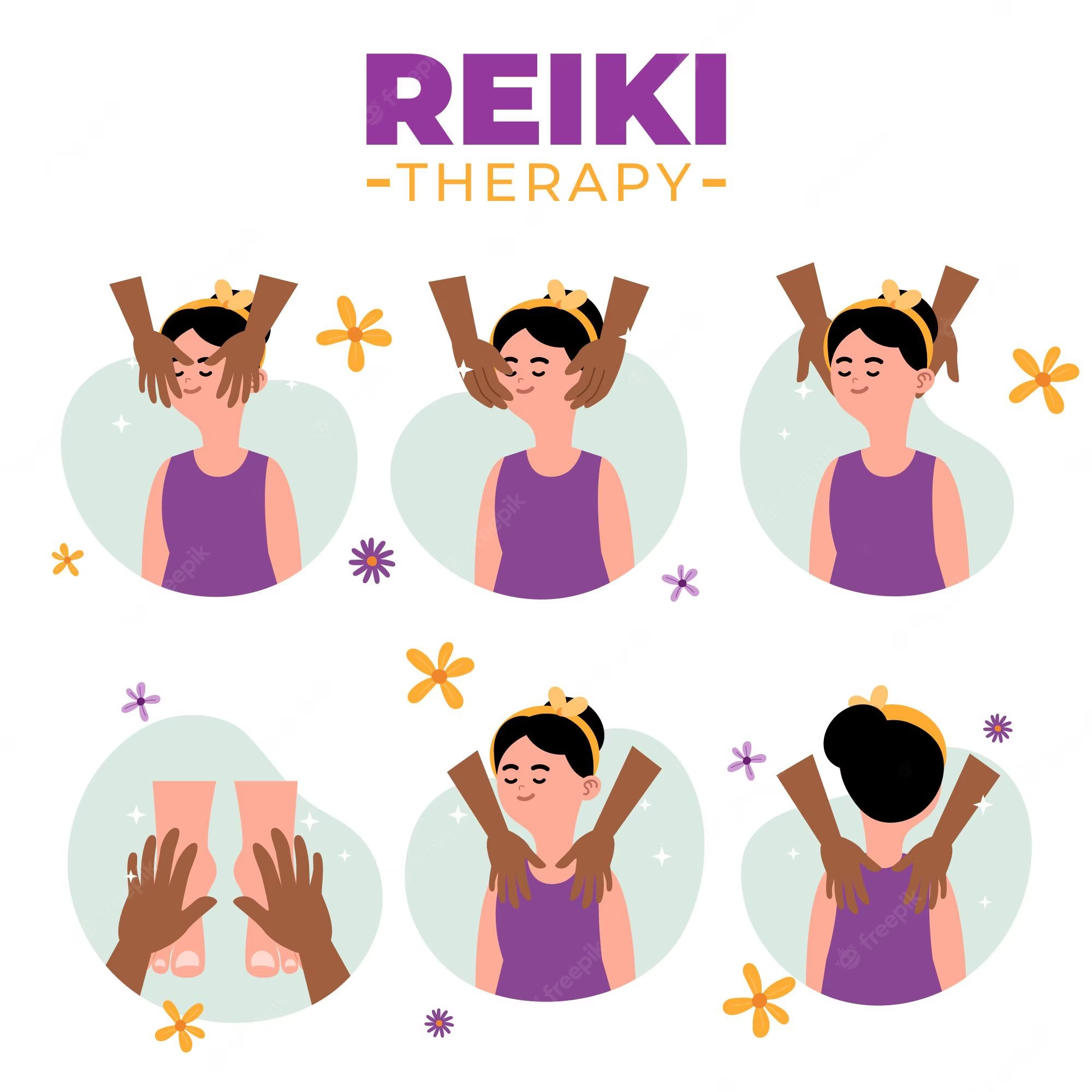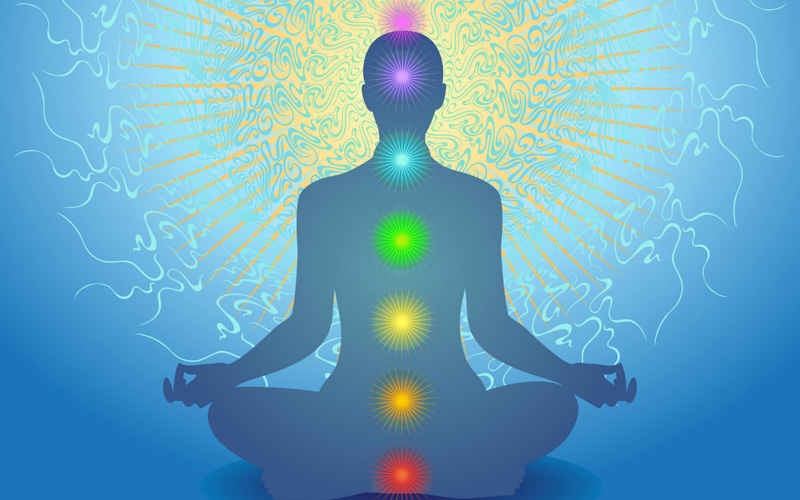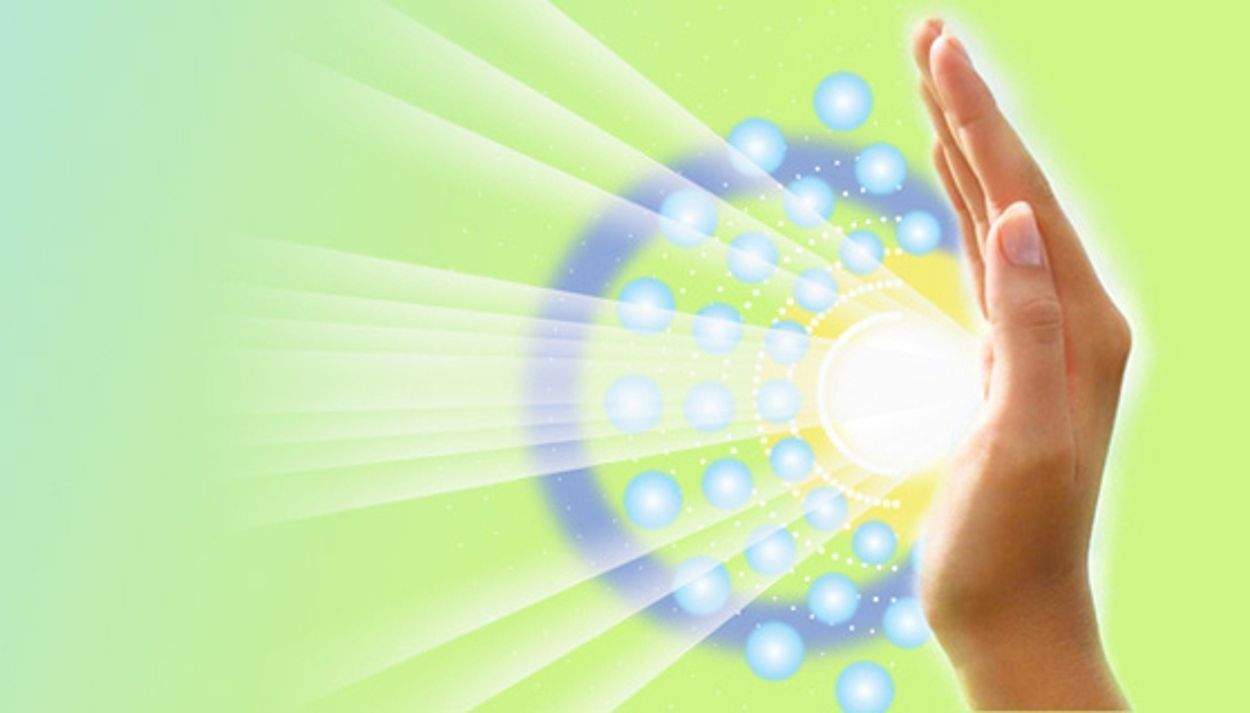When it comes to alternative healing practices, the realm of "energy work" has gained significant popularity over the years. Among the various modalities within this domain, Reiki stands out as a unique and well-practiced system. In this article, we will delve into the world of energy work and explore how Reiki distinguishes itself from other types of energy workand healing techniques.
What Is Energy Work?
Before we dive into the differences, it's essential to grasp the fundamental concept of energy work. Energy work is a holistic approach to healing that focuses on balancing and channeling the energy within and around the body. Practitioners believe that imbalances or blockages in this energy can lead to physical, emotional, and spiritual ailments. Various forms of energy work aim to address these imbalances to promote well-being.
Other Types Energy Work Beyond Reiki
- Pranic Healing: Pranic Healing is a non-touch energy healing system developed by Master Choa Kok Sui. Practitioners cleanse and energize the body's energy centers (chakras) to facilitate physical and emotional healing. It emphasizes the importance of cleansing and revitalizing the energy body.
- Crystal Healing:Crystal healing involves the use of crystals and gemstones to balance and channel energy. Different crystals are believed to have specific healing properties, and practitioners place them on or around the body to facilitate energy flow and emotional well-being.
- Chakra Balancing:Chakra balancing involves working with the body's energy centers, known as chakras, to ensure they are open, balanced, and functioning optimally. Various techniques, such as meditation, visualization, and energy work, are used to harmonize the chakras.
- Acupuncture:Acupuncture is a traditional Chinese medicine practice that involves the insertion of fine needles into specific points on the body known as acupuncture points or meridians. While it is primarily associated with physical health and pain management, acupuncture also affects the body's energy flow, known as "qi" or "chi."
The Fundamentals Of Reiki Practices
One of the most common inquiries I encounter is the question: "What distinguishes Reiki from your Intuitive Energy Healing Sessions?" In this segment, I aim to shed more light on this topic. It's important to note that my explanation pertains to my own practice, and other practitioners may have their unique interpretations of their services.
The Role Of Reiki In Energy Healing
Reiki serves as the cornerstone of channelled energy healing practices, offering a fundamental framework for safe and responsible energy healing. It provides the necessary structure, guidance, and attunements, making it an essential foundation for anyone wishing to explore energy healing.
A common query we receive is, "Do you become fatigued after conducting intuitive energy healing sessions? Are you depleting your own energy?"
The answer to these concerns is a resounding "No." When I engage in channelled energy healing, I tap into a boundless source of energy, often likened to the Universe's power station. This means that the energy I utilize during treatments is not my own; rather, I act as a conduit between you and this energy reserve, transmitting pure, unadulterated energy.
To illustrate this, envision the scenario of driving your car to a gas station. You pull up to the pump, and the service attendant is ready to fill your car with fuel.
In this analogy:
- Your car symbolizes your body.
- I assume the role of the service attendant.
- My duty is to pump energy into your body.
It's crucial to understand that during this process, no other energies are transferred—not even my own. The entire procedure is designed to be safe, pure, and untainted.
The Distinct Nature Of Reiki Energy
The energy harnessed in Reiki is unique in its purity and source. It emanates from a wellspring of universal life force energy, making it distinct from personal energy reserves. This universal energy is pristine and untouched by any individual influence.
When I facilitate Reiki sessions, I do not deplete my own energy, nor do I absorb any of your negative energy. Instead, I serve as a conduit through which this universal energy flows, directly to you. This energy is inherently positive and healing, devoid of any personal or negative connotations.
The Assurance Of Safe Energy Healing
Understanding the essence of Reiki and its role as a foundational practice in energy healing provides reassurance to both practitioners and clients. It ensures that energy healing sessions are conducted responsibly, without any risk of energy depletion or contamination.
Differences From Other Types Of Energy Work
Now that we've explored the distinctive features of Reiki, let's highlight how it differs from other types of energy work:
Reiki Vs. Acupuncture And Acupressure - Precision Vs. Universality
In the realm of energy-based healing practices, two prominent modalities—Reiki and acupuncture/acupressure—stand out as distinctive approaches to promoting balance and healing within the body. Let's delve deeper into the nuances that set these practices apart.
Energy Pathways - Specific Vs. Universal
Acupuncture and Acupressure:These traditional Eastern healing practices are firmly rooted in the concept of meridians, which are specific energy pathways believed to crisscross the body. Acupuncture involves inserting fine needles into precise points along these meridians, while acupressure applies pressure to these same points. The objective is to stimulate the flow of vital energy or "Qi" along these meridians, addressing specific health concerns or imbalances.
Reiki:In contrast, Reiki operates on a broader, more universal plane. It doesn't necessitate an intricate understanding of meridians or specific points on the body. Instead, Reiki practitioners tap into the vast reservoir of universal life force energy and channel it directly to the recipient. This energy is inherently intelligent and seeks to harmonize the recipient's entire energy system, without the need for pinpoint accuracy.
Technique And Training - Skill Vs. Attunement
Acupuncture and Acupressure:These practices require a high degree of skill and precision. Acupuncturists undergo rigorous training to accurately locate and insert needles into the meridian points. Acupressure practitioners also need a deep understanding of these points to apply the right amount of pressure effectively. Years of study and practice are typically involved in mastering these techniques.
Reiki:Reiki, on the other hand, places a strong emphasis on attunements. During attunement ceremonies, Reiki practitioners receive energetic blessings or initiations from experienced Reiki Masters. These attunements enhance the practitioner's ability to channel Reiki energy. While training and practice are essential, Reiki's approach is more about aligning with the energy source and allowing it to flow naturally.
Focus - Symptomatic Vs. Holistic Healing
Acupuncture and Acupressure:These practices often target specific health issues or symptoms. Practitioners aim to alleviate pain, manage stress, or address particular ailments by manipulating the body's energy flow through meridians. The approach is symptomatic, focusing on the area of concern.
Reiki:Reiki adopts a holistic approach to healing. It doesn't isolate specific symptoms or ailments. Instead, it promotes balance and harmony throughout the recipient's entire energy system, addressing the root causes of imbalances rather than merely alleviating symptoms.
Reiki Vs. Chakra Balancing - Two Paths To Energy Harmony
Energy healing encompasses a diverse range of practices, each with its unique approach to balancing and harmonizing the body's energy. Two prominent methods in this domain are Reiki and Chakra Balancing. Let's explore the distinctions between these modalities and understand how they relate to the intricate system of chakras.
Chakra Balancing - A Focus On Energy Centers
Chakra Balancing:This healing method revolves around the concept of chakras—energy centers that are believed to exist along the spine and within the body. Practitioners of chakra balancing work with the notion that these centers play a pivotal role in regulating various aspects of our well-being, including physical, emotional, and spiritual health. The practice of chakra balancing involves assessing the status of these energy centers and applying specific techniques to realign, clear, and optimize their function.
Reiki:In contrast, Reiki does not engage in the direct manipulation of the chakras as a primary healing mechanism. While Reiki influences the body's energy system, it does so in a more holistic and intuitive manner. Reiki practitioners channel universal life force energy, which possesses innate wisdom. This energy flows naturally to where it is needed within the recipient's energy system, addressing imbalances without a specific focus on the chakras.
Technique And Methodology - Precision Vs. Universality
Chakra Balancing:Practitioners of chakra balancing employ a variety of techniques, such as meditation, visualization, sound therapy, or the use of crystals, to assess and align individual chakras. This approach is precise, systematic, and requires a deep understanding of each chakra's unique attributes and potential imbalances.
Reiki:Reiki takes a more universal and intuitive approach. Reiki practitioners do not need extensive knowledge of the chakra system or its intricacies. Instead, they rely on the inherent intelligence of the universal life force energy they channel. This energy intuitively seeks out and addresses imbalances throughout the entire energy field of the recipient, without the need for specific interventions.
Focus - Chakras Vs. Holistic Energy Flow
Chakra Balancing:As the name suggests, the primary focus of chakra balancing is on the chakras themselves. Practitioners work to identify and correct blockages or imbalances within individual energy centers. This approach is particularly effective when specific issues are associated with particular chakras.
Reiki:Reiki takes a holistic perspective, encompassing the entire energy system. Rather than isolating individual chakras, Reiki promotes balance and harmony throughout the recipient's entire energy field. It addresses underlying causes of imbalances, aiming for a comprehensive and all-encompassing healing experience.
Reiki Vs. Crystal Healing - Unveiling The Energetic Choices
Within the realm of energy healing, Reiki and Crystal Healing are two practices that capture the imagination of seekers of well-being. Both offer distinct ways to engage with the healing energies that surround us. Let's explore the core differences between these modalities and their unique approaches to energy manipulation.
Crystal Healing - The Power Of Earth's Gems
Crystal Healing:This practice centers around the use of crystals and gemstones, each believed to possess specific energetic properties. Practitioners select and place crystals on or around the body, aiming to harness their unique vibrations to facilitate healing. Crystals are thought to act as conduits for energy, amplifying, purifying, or directing it toward specific intentions.
Reiki:In contrast, Reiki relies solely on universal life force energy, often referred to as "Ki" or "Qi." Reiki practitioners act as channels for this energy, directing it toward recipients without the need for external tools like crystals. The emphasis is on connecting directly with this universal energy source, which is considered inherently intelligent and healing.
Technique And Application - Crystals Vs. Pure Energy Flow
Crystal Healing -Practitioners of crystal healing select crystals based on their energetic properties and placements, often corresponding to the chakras or specific points on the body. The choice of crystals and their arrangement is crucial, as each crystal is believed to resonate with distinct intentions and healing purposes.
Reiki:Reiki is less focused on material choices and specific placements. Instead, Reiki practitioners undergo attunements that enhance their ability to channel universal life force energy. The energy intuitively flows to where it is needed within the recipient's energy field, addressing imbalances without reliance on external objects.
Focus - Crystals Vs. Universal Energy
Crystal Healing:The focus of crystal healing is primarily on the properties and energies of the chosen crystals. The practitioner's skill lies in selecting the right crystals and utilizing their unique attributes to align and balance the recipient's energy.
Reiki: Reiki Takes A Broader Approach, Emphasizing The Universal Life Force Energy Itself. The Practitioner's Role Is To Act As A Conduit For This Energy, Allowing It To Flow And Bring Harmony To The Recipient's Entire Energy System. Reiki Does Not Isolate Specific Energetic Properties Of Materials But Works With The Innate Intelligence Of The Universal Energy Source.
Reiki Vs. Pranic Healing - Contrasting Approaches To Energy Restoration
In the expansive realm of energy healing, Reiki and Pranic Healing emerge as two distinctive modalities, each with its own philosophy and methodology. To gain a deeper understanding of these approaches, let's explore the fundamental differences between Reiki and Pranic Healing and how they approach the vital task of rejuvenating the energy body.
Pranic Healing - The Art Of Energy Cleansing And Revitalization
Pranic Healing:Rooted in the belief that the body possesses an energy body, Pranic Healing focuses on cleansing, purifying, and revitalizing this energy field. Practitioners of Pranic Healing engage in specific techniques aimed at removing stagnant or diseased energy from the energy body and subsequently infusing it with fresh, vital energy. This process is akin to cleansing and recharging a battery, seeking to restore optimal function.
Reiki:In contrast, Reiki operates on a different premise. It does not involve explicit targeting and removal of energy blockages or impurities. Instead, Reiki places trust in the innate intelligence of the energy itself. Reiki practitioners channel universal life force energy, which is believed to possess inherent wisdom. This energy intuitively knows where it is needed within the recipient's energy system, without the practitioner needing to identify or manipulate specific blockages.
Technique And Application - Active Vs. Passive Approach
Pranic Healing:Practitioners of Pranic Healing take an active role in scanning, cleansing, and energizing the energy body. They employ specific techniques and protocols to diagnose and treat energy imbalances. This hands-on approach requires a deep understanding of energy anatomy and the ability to manipulate and direct energy intentionally.
Reiki:Reiki adopts a more passive approach. Reiki practitioners act as conduits for the universal life force energy, allowing it to flow naturally and without specific intervention. The recipient's energy system guides the energy, directing it to where it is most needed, without the practitioner's active involvement in diagnosing or removing energy blockages.
Focus - Targeted Healing Vs. Universal Flow
Pranic Healing:Pranic Healing is inherently focused on targeting and addressing specific energy imbalances or ailments. Practitioners work systematically to detect and rectify blockages within the energy body. The emphasis is on precise diagnosis and treatment of energy-related issues.
Reiki:Reiki takes a broader, more holistic perspective. It promotes balance and harmony throughout the recipient's entire energy field, without isolating specific issues or blockages. The primary focus is on the universal life force energy's natural flow, trusting it to bring about healing in its own way.
People Also Ask
What Makes Reiki Different From Other Healing Modalities?
Reiki stands out from other healing modalities due to several distinctive characteristics:
- Universal Life Force Energy:Reiki is based on the belief in a universal life force energy that flows through all living things. Reiki practitioners act as conduits for this energy, channeling it to recipients. This universal energy is considered inherently intelligent and is believed to promote healing, reduce stress, and enhance overall well-being.
- Non-Diagnostic and Non-Invasive:Unlike some healing modalities that involve diagnosis or manipulation of energy meridians or chakras, Reiki is non-diagnostic and non-invasive. Reiki practitioners do not analyze or interfere with the recipient's energy system. Instead, they trust that the universal life force energy knows where it is needed most.
- Hands-On and Hands-Off Healing:Reiki can be administered through direct touch or at a distance, offering versatility in its application. While some energy healing practices require physical contact, Reiki can be performed without direct touch.
- Symbols and Attunements:Reiki incorporates symbols and attunements, which are unique to this healing modality. Symbols act as keys to access specific aspects of the energy, and attunements are ceremonies that enhance a practitioner's ability to channel Reiki energy. These elements are not typically found in other energy healing practices.
What Kind Of Energy Is Reiki?
Reiki is believed to be a form of universal life force energy, sometimes referred to as "Ki" or "Qi." This energy is considered to be the life force that flows through all living things, connecting and animating them.
Reiki practitioners tap into this universal energy source and channel it to recipients during healing sessions. It is described as pure, positive, and intelligent energy, devoid of any negative connotations or influences. Reiki energy is believed to promote balance, relaxation, and healing on physical, emotional, and spiritual levels.
What's The Difference Between Reiki And Bio Energy?
Reiki and Bio Energy are both forms of energy healing, but they have differences in their principles and approaches:
- Reiki:As described earlier, Reiki is based on the belief in a universal life force energy that is channeled by practitioners to recipients. It emphasizes the inherent intelligence of this energy, and practitioners do not need to diagnose or manipulate energy directly. Reiki can be administered with or without physical touch.
- Bio Energy:Bio Energy healing, on the other hand, is a modality that focuses on the human energy field, often referred to as the "biofield." Practitioners of Bio Energy Healing work with the recipient's energy field, using techniques to detect and correct imbalances or blockages in the energy flow. Bio Energy practitioners may have a more diagnostic and hands-on approach compared to Reiki.
Conclusion
In the world of energy work, Reiki stands as a distinctive and widely practiced healing modality. Its focus on channeling universal life force energy, non-diagnostic approach, and use of symbols and attunements set it apart from other types of energy work. While each energy healing method has its unique strengths and applications, Reiki offers a gentle and versatile approach to promoting holistic well-being.
As you explore the realm of energy work, understanding these differences can help you choose the approach that resonates most with your needs and beliefs. Whether you opt for Reiki or another modality, the ultimate goal remains the same - to enhance your vitality and support your journey toward optimal health and balance.




